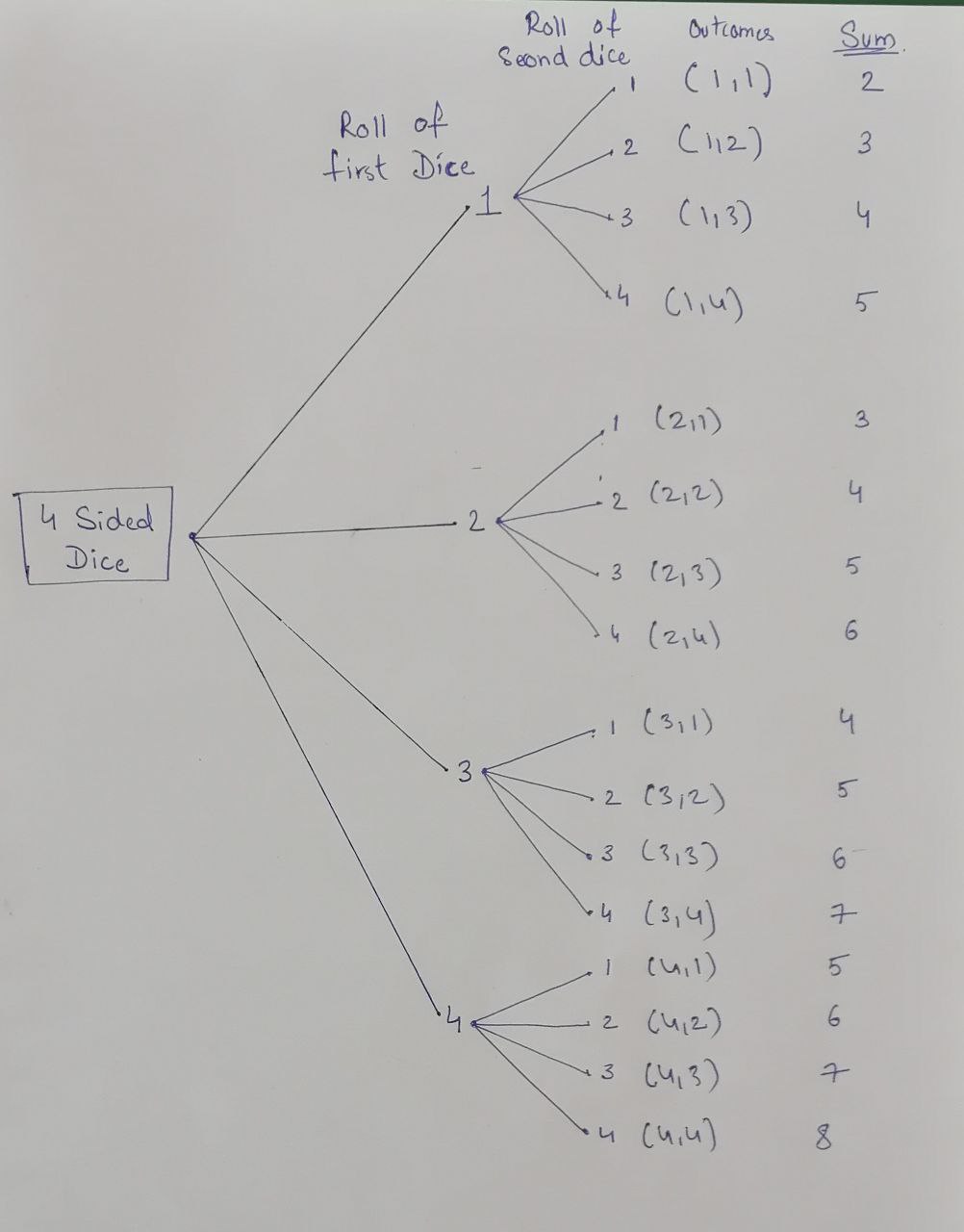You pull out your dice from playing Dungeons and Dragons. Specifically you pull out a 4 sided die. The possible outcomes are the numbers 1, 2, 3 and 4 and they are all equally likely. Create a tree diagram on a piece of paper showing the results of rolling the die once and then from there rolling the die again. Follow all the branches of your tree and add up the total number rolled for those 2 die (e.g., if roll 2 first and then 4 second, the sum = 6). A) Below make a list of all possible sums of rolling 2 4-sided die when considering the order of those outcomes. B) What is the probability of rolling 2 die and getting a sum of 6? Set up, do not need to solve to final number. C) What is the probability of rolling a die and not getting a sum of 6? Set up, do not need to solve to final number.
You pull out your dice from playing Dungeons and Dragons. Specifically you pull out a 4 sided die. The possible outcomes are the numbers 1, 2, 3 and 4 and they are all equally likely. Create a tree diagram on a piece of paper showing the results of rolling the die once and then from there rolling the die again. Follow all the branches of your tree and add up the total number rolled for those 2 die (e.g., if roll 2 first and then 4 second, the sum = 6).
A) Below make a list of all possible sums of rolling 2 4-sided die when considering the order of those outcomes.
B) What is the
C) What is the probability of rolling a die and not getting a sum of 6? Set up, do not need to solve to final number.
D) Did we generate the probability listed in B above (choose one): Subjectively, Theoretically, or Empirically?
“Since you have posted a question with multiple sub-parts, we will solve the first three subparts for you. To get the remaining sub-parts solved, please repost the complete question and mention the sub-parts to be solved.”.
Given
A dice with 4 outcomes is rolled twice one by one. Its tree structure will look like this:

Trending now
This is a popular solution!
Step by step
Solved in 2 steps with 1 images









